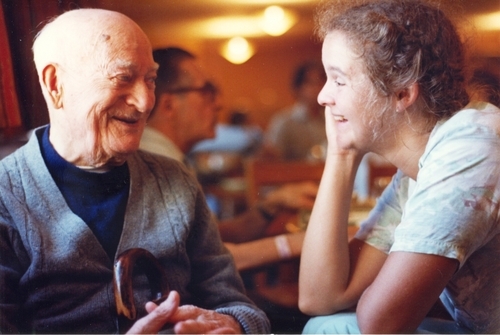Dunlap, Clarence R.: my Air Force recollections (July 2 - September 3, 1981)
An interview/narrative of Clarence R. Dunlap's experiences during World War II. Air Marshal Dunlap, C.B.E., served with the Royal Canadian Air Force. Interview took place on July 2, 8, 16, 23, 30, August 20 and September 3, 1981.
Interviewee: Dunlap, Clarence R., b. 1908
Interviewer: Roy, Reginald H.
Rank: Air Marshal. Medals and Honours: Order of the British Empire (CBE)
ABSTRACT: Air Marshal Clarence R. Dunlap, C.B.E. Royal Canadian Air Force (Reel 15, Side 1) (First interview, July 2, 1981 - Dr. R.H. Roy) Refers again to attack on a rocket site near Cherbourg. Composition of No. 2 Group, RAF. Ground and air communications. Location of and avoidance of flak batteries. The GEE navigation system. Americans bomb Canadian army in Normandy, then the RAF does the same. Points out the great difficulty in controlling Bomber Command from the ground. Describes precision bombing by 139 Wing. (Second interview, July 8, 1981) Comments on Wing Commander Rod Bell-Irving, killed in action. Many keen officers, one Norwegian insisted on flying continuously, 100 sorties. Recalls that one officer accumulated 198 sorties. Wing moved to Belgium in October 1944. Returns to account of D-Day operations. The Wing operated in Europe largely in support of the army. (95:00) (Note: No Side 2) (Reel 16, Side 1) Unusable as recorded at 15/16 IPS. (Reel 16, Side 2) Same interview at 1 7/8 IPS (Dr. R.H. Roy). This interview is in answer to questions posed by Dr. W.A.B. Douglas, Director of History, Dept. of National Defence. Comments on early aircraft. Many good types especially the Hawker biplanes of the 1930's, but deplores the use of the Westland Wapiti. Beginning of modern armament. Purchase of Curtis P-40 fighter for home defence service. Hawker Hurricanes became common in Canada. Mentions several other good aircraft. Constantly pressuring the Air Ministry for latest aircraft for the RCAF, overseas. Post-war, at air force headquarters he soon found that budget restraints precluded the "military" aspects of the RCAF. Emphasis was placed on transport and communications. Discusses post-war aircraft. American sources of supply seemed better than the British. Advantages of North American integration. (95:00) (Reel 17, Side 1) Refers to Dunsfold air field construction. Canadians in 139 Wing RAF. Anecdotes. Operations in Belgium (at Melsbroek) near Brussels, an ex-German air field damaged, but of high quality. Discusses "Fido", fog dispersal system. In January, 1945, was promoted to air commodore and posted to No. 6 Bomber Group at Middleton St. George. (80:00) (Reel 17, Side 2) Remarks about 139 Wing. Numbering of Canadian squadrons. Reads an account of flying daylight operation into the Continent. A Mitchell is shot down by friendly aircraft. Briefing for D-Day. Attacked Normandy just after midnight 5/6 June, 1944. Attacked rail yards in Normandy. Headquarters of 21 Panzer Division destroyed at LaCaine on June 10, 1944. Comments on the frequent changes in squadron commanders as they became "tour expired". Some experience in night bombing. Flew to France to a conference and to reconnoitre for a suitable air field for the Mitchells. Eventually found Melsbroek. Landed first Allied aircraft at Antwerp. (95:00) (Reel 18, Side 1) Leaves Brussels on Jan. 22, 1945, to return to Bomber Command. Notes the changes compared to 1943, including the expansion to 13 operational squadrons and 4 heavy conversion units to accommodate the constant training of new air-crew. All Canadian-built Lancaster X's a great change in tactics and equipment. Discusses the German defensive radar. RAF/RCAF evasion tactics. The German radar-controlled flak caused heavy losses, which were somewhat reduced by the use of "Window". German counter measures. The special No. 10 Group with 50% fighters, later de Haviland Mosquito carrying Serrate radar which was effective against night fighters. "Corona", a powerful radar-jamming device carried in airborne radar stations. Rate of loss reduced and morale climbed. Senior officers, operational and administrative "types". (80:00) (Reel 18, Side 2) The occupation of Europe meant less enemy territory to overfly. Bomber Command returned to day-bombing. Structure of command system, staff positions, etc. Heavy raids undertaken in March, 1945. Considerable number of mining operations. Some shortage of targets noted due to widespread destruction. Ordered back to Canada as Deputy Air Member for Air Staff, Plans and Operations. Arrived the day the war ended. Comments on the effectiveness of Bomber Command. As accuracy improved, fewer aircraft could produce the same damage as a much larger force. Tiger Force: the Group formed to go to the Far East. Emphasizes the importance of operational experience in staff appointments. (70:00) (Reel 19, Side 1) Deputy Member for Air Staff. Leave in Vancouver. Familiarization flights through B.C. and to the Northwest Staging Route (Edmonton). Formation of the peace-time air force. A heavy bomber force deemed to be too expensive. Emphasis placed on transport, photographic and survey work with the Auxiliary Air Force to be more "military". Selection of officers. The North West Staging Route. (95:00)
- In Collection:
- 12 sound recordings (MP3)
- 48.69096, 9.14062
- Four original sound tape reels (ca. 515 min.) : 1 7/8 ips, 2 track, mono. (nos. 15-18) ; 6 sound cassette copies : standard, mono. (nos. 30-35) in Special Collections.
- Canadian Military Oral History Collection
- DCR_251
- Special Collections Finding Aid: https://search.archives.uvic.ca/reginald-herbert-roy-fonds
- September 8, 2011
- Digital sound recording in .wav format at 16 bits and 44 kHz. In .mp3 format at 56 kbps and 24 kHz. Digitized by JF, technical and cataloguing metadata provided by JF and JP. Transferred from audio reel to audio cassette between 1987-1997. Interview migrated to digital format for UVic Special Collections in 2011. Migration metadata by KD and MT.
- Rights
- This interview has been posted with the understanding that it may be used for research purposes only. Should the interviewee or their heirs have any objections to this interview being accessible on the Internet, it will be removed promptly. Contact UVic Special Collections for permission if using for other than research purposes: speccoll@uvic.ca
- DOI
